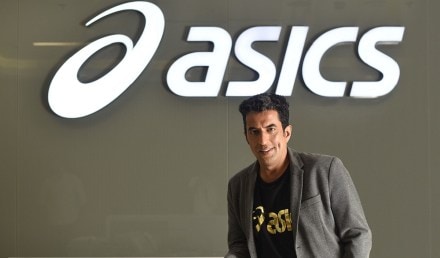ASICS India has emerged from the Covid impact expecting to grow 2022 sales 25-30 per cent over the last year. While the brand’s average footfall now is higher than the pre-pandemic levels, it is looking to increase sales via digital mediums, Rajat Khurana, Managing Director, ASICS India and South Asia, told Tanya Krishna of FinancialExpress.com. “We are expecting around 50 per cent of the business to come from digital mediums in the next 3 years,” he said. ASICS is also looking to grow offline retail channels, with a target of 85 total stores by the end of 2022. Here are the excerpts from the interview.
Tell us about the evolving consumer behaviour and new trends in the sports and athleisure segment. How is the company adjusting to this?
At ASICS, we started getting better footfall during the second half of 2021 and the demand was mainly for the performance related products. During the pandemic, people learned the importance of fitness in their lives and this was the prime reason for the momentum which continued in the year 2022 as well. Another phenomenon which we noticed is the shift towards the digital medium. Prior to the pandemic, around 25 per cent of business used to come from online channels, which increased to 35 per cent in 2022 and this may touch 40 per cent by the end of this year. We are expecting around 50 per cent of the business to come from digital mediums in the next 3 years.
Which are your bestselling or most popular categories?
Running is the fastest growing category for us. One reason is that we are predominantly a running-dominated, performance-dominated organization globally. We are the leaders in the segment and more than 50-55 per cent of the total sales is contributed by the performance, running segment, followed by tennis and cricket. If we talk about business proportion, 55 per cent of sales come from performance range, 20 per cent from core performance which is sports and 15 per cent from athleisure, etc. Our aim is to be the No.1 brand in the running segment in the next 2-3 years.
How does the company plan to expand in terms of retail presence or even product categories?
In terms of mono stores or even department stores, we have 75 stores and this year, we will be opening 10-12 more stores, taking the total count to approximately 85 by the end of December 2022. In terms of the multi brand outlets, we have more than 700 point-of-sales across India, which is all across tier-I, -II, and -III cities. In fact, more than 20 per cent of our stores are in tier-II and -III cities of India. We witnessed around 30 per cent of our sales coming from tier-II and -III towns which prompted us to open more than 10-12 stores in these areas in the last few years. While the demand in these areas are quite strong, the average price point of the product is slightly lower than what is being achieved in metro cities.
In terms of manufacturing or sourcing, what percentage of the overall portfolio are manufactured in India? And are there any plans to increase that percentage
We have substantially increased the local production in India in the last few years – be it in footwear or apparel category. I would say we have done a good job in terms of local sourcing. We believe in ‘Make in India’ initiative. In terms of percentage, this year, we will touch more than 25 per cent for both apparel and footwear clubbed together.
How was the company’s performance last year and what is your outlook for the current year 2022?
The performance has been quite strong this year and we will be growing by 25-30 per cent over the last year’s numbers, by the end of 2022. We have developed good relationships with our partners and the order book looks quite strong even next year.
Will there be a price hike by the company in the coming months? Also, what will be the quantum of the price hike and what are the factors leading to rise in prices?
There has been inflation pressure for all the brands. It is not only the raw material price increase, the shipping cost, the logistics cost and the oil price, everything has increased, which is putting pressure on the cost of any product. While we don’t pass on all the price hikes to the consumer, some of the price hikes are inevitable. From the next season, there will be a 5-7 per cent increase in prices.
